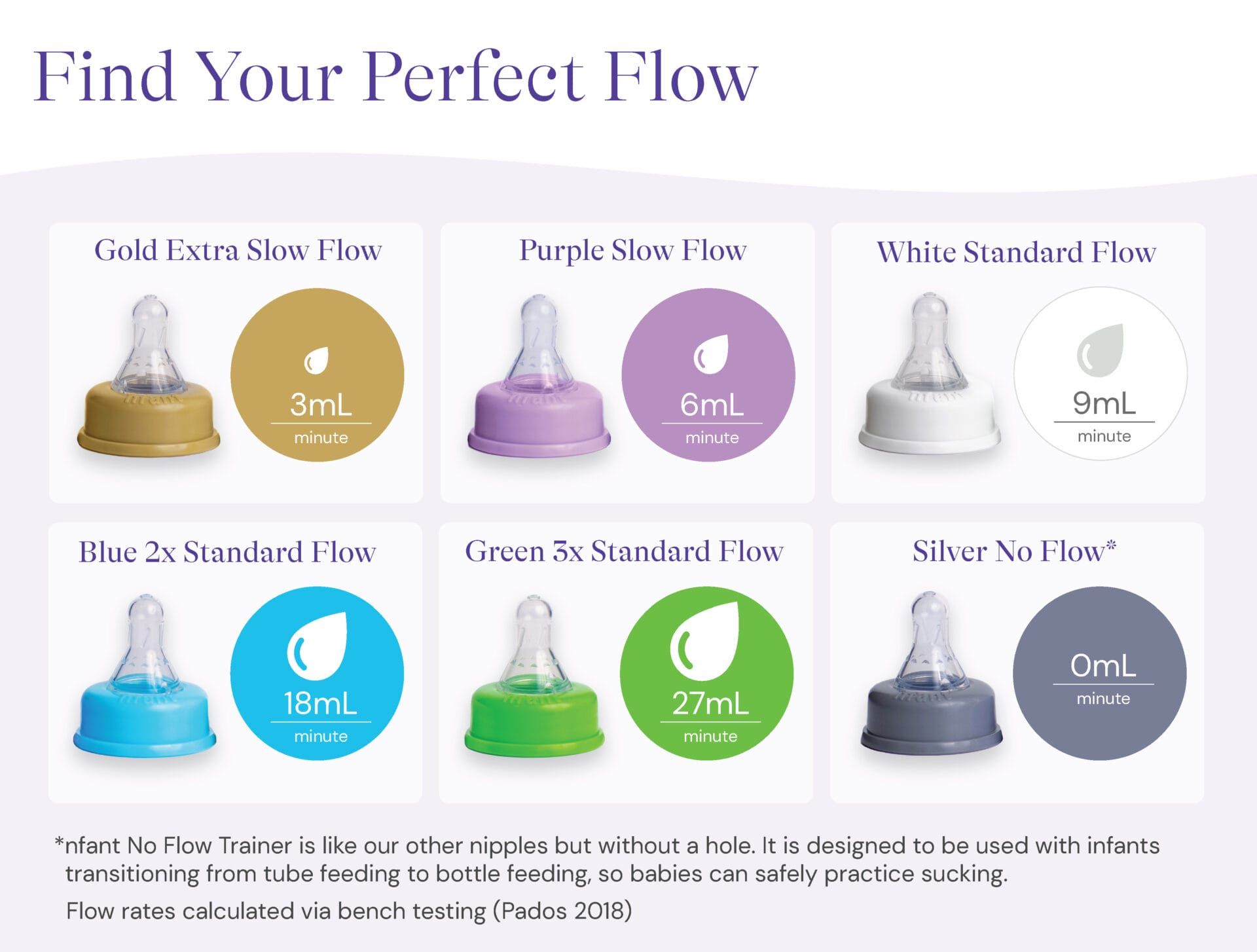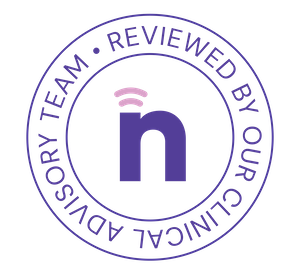How to Choose the Right Nipple Flow Rate

Generally speaking, many newborn babies will start with a Slow Flow Nipple, or even one of nfant®’s patented Extra Slow Flow nipples, but that’s not always the case.
There’s no hard and fast rule that dictates where babies start and end. When it comes to flow rate, it’s entirely up to your baby’s unique preferences and needs. Some babies may move on to a medium or fast flow nipple fairly quickly, and others may stick with a slow flow nipple for the entire experience of bottle feeding.
Of course, for you as the parent, it would be much easier if we could share a foolproof guide. We do the next-best thing with our nfant® Thrive Tracker App, which uses real-time biofeedback captured during feedings to help you determine the best nipple flow rate for your baby. It even helps you predict when it may be time to change nipple speeds.
If you are not using the nfant® Thrive Feeding System, you can still watch for some tell-tale cues and signs from your baby that it’s time to make a change. Here’s a quick guide to subtle and more urgent signs that you need a different nipple.
Signs your baby’s nipple flow is too slow
If your baby’s nipple flow rate is too slow, your baby may …
- Suck 3 times or more before swallowing: A typical cadence for baby’s who are feeding well is a steady coordination of suck-swallow-breathe. If you notice your baby sucking several times or sucking very hard before swallowing, your baby may be working too hard to get enough liquid from the bottle.
- Show signs of frustration: If your baby pulls off the nipple and cries after a few sucks, or bites and tugs at the nipple, these may be signs of frustration. You will want to make sure you don’t see milk in your baby’s mouth, which could indicate he is pulling away from too much flow.
- Feed for more than 20–30 minutes: If your feedings consistently last longer than 30 minutes, we recommend you try changing how you hold your baby during feedings. If this alteration does not help, try going up one level in nipple flow rate.
- Fall asleep on the bottle or nipple: If your baby consistently takes over 20 minutes to feed and fall asleep before finishing the bottle, you may try increasing your nipple’s flow rate.
Signs your baby’s nipple flow is too fast
If your baby’s nipple flow rate is too fast, your baby may…
- Stop feeding or pull away: Your baby may push the nipple out of his mouth with his tongue, pull away from the bottle or turn his head. He may even close his mouth and refuse to feed.
- Cough, gag or choke: If your baby is unable to swallow fast enough to prevent aspiration (liquid in the airways), your baby may cough, gag, gurgle or appear to be choking. Think about what happens if your drink “goes down the wrong way” or you accidentally swallow water when swimming.
- Let milk fall out of their mouth: Babies who are overwhelmed with too much breastmilk or formula coming out of the nipple too quickly may let the overflow liquid drip out of the front of their mouth. They are basically eliminating the “extra” milk to protect the airway.
- Show signs of distressed breathing: When babies are physically unable to swallow fast enough to clear the back of the throats, you may notice distressed breathing along with gurgling or wet sounds when swallowing.
Want to learn more about why flow rates matter? Check out the Top 3 Dangerous Myths about Nipple Flow Rate.
